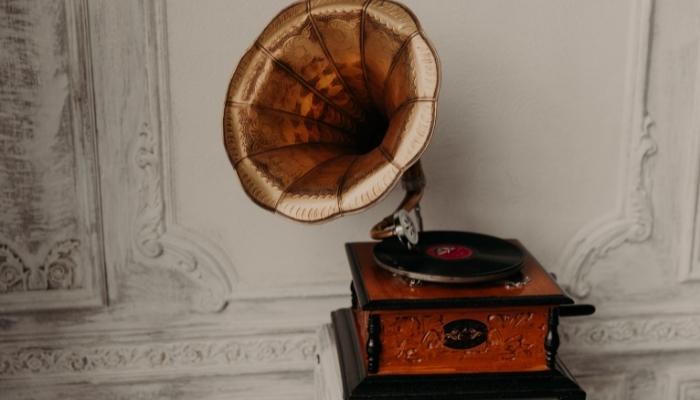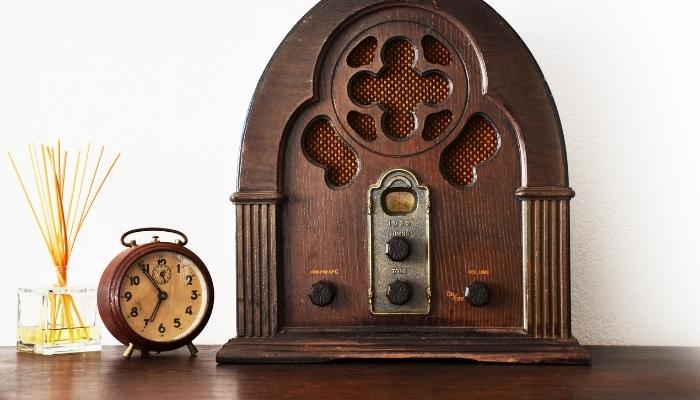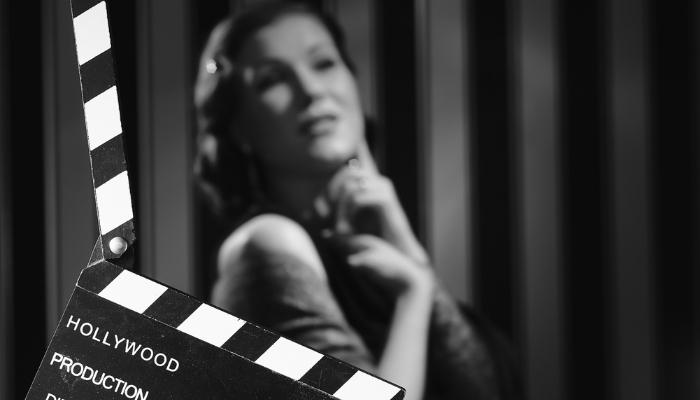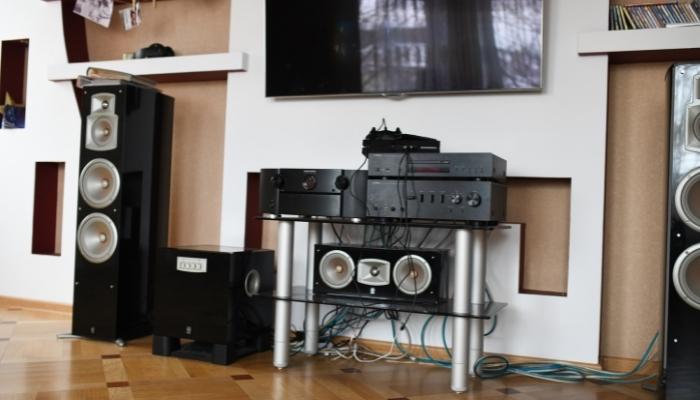Today, there's a speaker in everything. TVs, smartphones, computers, tablets, headphones…the list goes on. But once upon a time, the idea of a speaker replicating clear sounds was a mind-blowing experiment. How does one capture sound?
Lucky for us, someone found a way — several someones. And now we have home theater systems with surround sound, bass boosters, and equalizers to enjoy!
How Speakers Work
Before we dive into the history of speakers, we should first cover just what speakers are and how do they work. A loudspeaker uses a speaker driver that is an electroacoustic transducer, which converts audio signals into sound.
More specifically, an electric current is sent through the voice coil and produces an electric field that interacts with the magnetic field of the permanent magnet attached to the speaker. The electrical charges repel and attract as the audio signal goes through the voice coil and the musical waveform moves up and down, while the voice coil is attracted and repelled by the permanent magnet.
This process makes the cone attached to the voice coil move back and forth, creating air pressure waves that we perceive as sound.
However, the first speakers had a long way to go before getting to this level.
The Early Sound

It might be hard to imagine, but the first speakers weren't in a radio or the first PA systems — they were in telephones! From there, the world was hooked and began to experiment with the world of sound
- 1861: Johann Philipp Reis installed a speaker that produced clear tones on his telephone, but the sound came out muffled.
- 1876: Alexander Graham Bell got a patent for the first loudspeaker, which produced intelligible speech.
- 1877: Werner Von Siemens took Bell's design and created an electromagnetic coil-driven speaker, but it wasn't successful.
- 1877: Thomas Edison patented a system using compressed air to amplify sound in the early cylinder phonographs but went with horns for amplification.
- 1898: Horace Short patented a loudspeaker driven by compressed air that produces better sound than previous speakers.
It's hard to believe that so many developments have happened in such a short time. But the real winner during this timeframe was the electromagnetic coil-driven speaker, which is still being used in speakers now! However, nobody knew it yet at this point in history.
Heard It on The Radio

Even with the invention of the electromagnetic coil-driven speaker in 1877, it took a while for the technology to launch:
- 1898: Oliver Lodge developed the first experimental moving coil loudspeaker in 1898.
- 1915: Peter L. Jensen and Edwin Pridham designed the first practical moving coil loudspeakers.
- 1924: Chester W. Rice of General Electric and Edward W. Kellogg of AT&T first patented moving coil technology using a permanent magnet and induction to move the coil and diaphragm to produce sound waves.
With the success of Chester Rice and Edward Kellog's technology, they created the Radiola Loudspeaker #104. It boosted the frequency response and sound pressure level to replicate crisp audio for the first time ever. This and the other Radiola models became the first battery-less radios!
This system lets people listen to the news, radio stories similar to serial novels, sports, and more as their primary form of entertainment!
The Talkies

Today, we can't imagine watching a movie or TV show without sound. But when Hollywood first started, that's precisely what they had to do until the right speaker came to be.
- 1924: The Brunswick Balke Collender Company introduced the first all-electric home phonograph with a dynamic loudspeaker
- 1924: Walter H. Schottky and Dr. Erwin Gerlach invented the first ribbon loudspeaker using diodes.
- 1930's: Ribbon loudspeakers had combined drivers to make amplification better.
- 1937: Metro-Goldwyn-Mayer (or MGM) introduced the Shearer Horn System, which used a single horn with two compression drivers for high-frequency sounds.
- 1943: Altec Lansing invented duplex drivers and the 604 speakers, later known as the "Voice of the Theater."
The Sherer Horn System was the birth of high-fidelity sound (otherwise known as Hi-Fi), which is still current technology. Of course, there was still room for improvement in sound quality and performance, with Lansing's "Voice of the Theater." This system was way clearer and more coherent at loud volumes, so it became a film house industry standard by 1955. And it's still being used!
Feeling like you're in the middle of the action was a novel sensation and one that the audio world has been improving on ever since!
Sound On the Go

Public audio and its uses were covered, but what about listening to music at home? A key invention needed to take place first.
In 1954, Edgar Villchur invented acoustic suspension for duplex drivers, which produces a better bass response in smaller cabinets. The introduction of acoustic suspension was essential to developing stereo recording and reproduction, as recording high-definition songs with bass was hard to control. This process also led to experiments in speaker enclosure design and how they affected audio quality.
Their work with using speakers in smaller cabinets would eventually lead to listening to music on the go. In the '80s, this meant carrying around a heavy boombox on your shoulders. In the '90s, it meant keeping your Walkman clipped to your belt (or fanny pack). Now it can mean wireless Bluetooth speakers, car radios, or music on our phones!
We've Got the Power

Another important aspect of sound at home was the invention of the active 2-way system in 1980 by Meyer Sound Laboratories.
This powered speaker, made by Meyer, introduced tweeters for high-frequency sounds, woofers for low-frequency sounds, and crossover circuits to feed the signals to both drivers. Since the frequency range is so broad, this covered the full spectrum of sound.
Eventually, their success also led to the 3-way system, with a mid-range driver handling middle frequencies and a subwoofer that manages the lowest frequencies. This cracked open a whole new side of sound that audio lovers love!
Upgrade Your Sound
Now, we have home audio systems to boost the sound on our TVs with soundbars, receivers, and a matching pair of speakers. Of course, if you're a dedicated audiophile, you have a 7.1 Hi-Fi surround and speaker system with floor-standing speakers, subwoofers, and more. And if you just love sound on the go, you have a variety of wireless speakers and headphones to get you in the groove.
Are you feeling inspired to upgrade your sound system? Check out our catalog for the latest speakers, receivers & amplifiers! And if you're not sure how to get started, our team at Toton’s TV are more than happy to help you. Contact us today!